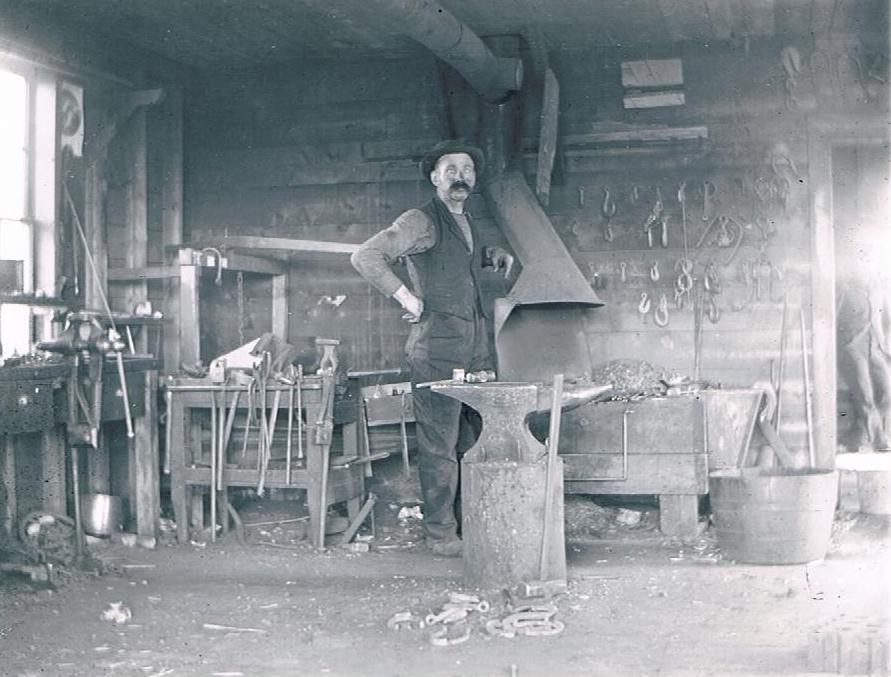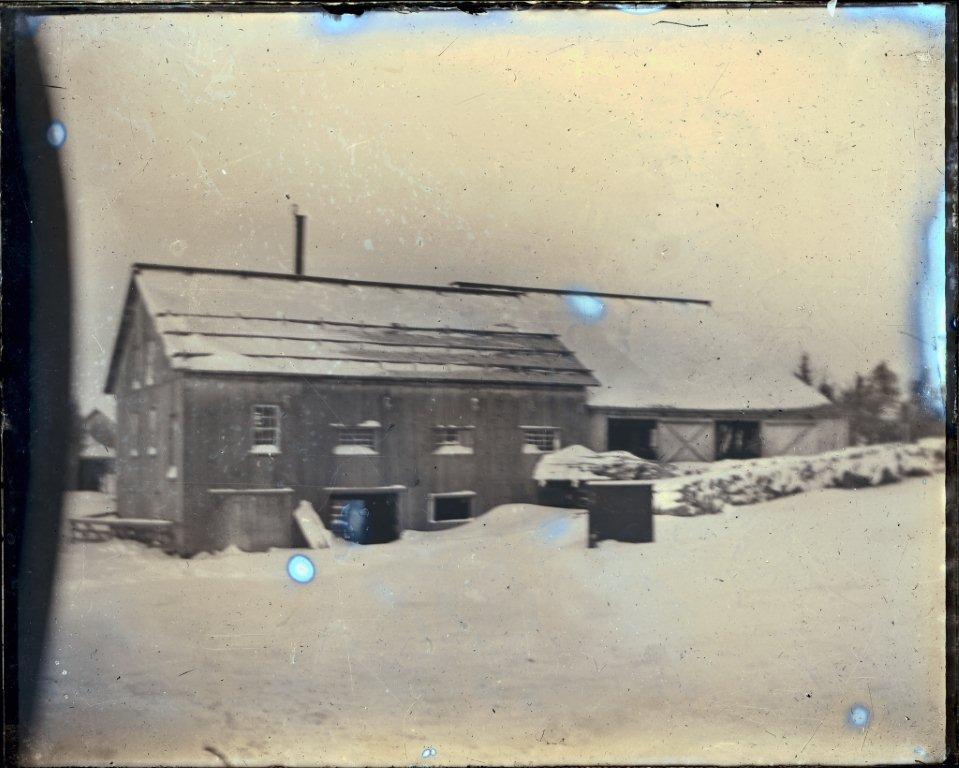The Blacksmith Shop *
* For more details on being a blacksmith go to W. Orville Langlois who described being a blacksmith in detail: Click Here

The Mill Blacksmith Shop
A necessity for the mill and logging operations was the blacksmith’s shop, located at the corner of the mill road just before it turned to cross the first bridge to the island. The building was of the usual drab unpainted flat lumber, and the roof covered with cedar shingles. Horses were shod in one big room on the first floor where all the blacksmith’s equipment was kept. Besides the wide front door light came through only one small window on the north and two others on the south side of the building.
Early in the mill’s existence the shop’s second story had been used for square dances, but later on it was converted into an apartment for the blacksmith and his family. Even so, this was no reason to stop the dances that men and women enjoyed. The windows in the upstairs quarters were about half the standard size, and so high in the wall they were cut off by the roofs overhang. While one blacksmith and his family lived there they could not bear to fix the pain in one of the small windows: The youngest boy had smashed it a few days before he got sick and died.
As blacksmithing was a trade, the Reynolds’s were forced to pay him second best of their employees. The diverse tasks of the black smith required more know how than was demanded of any other employee. Often when the logging camps were all operating, the blacksmiths worked long hours into the night shoeing horses and repairing logging sleds. Aside from shoeing horses a blacksmith was expected to make sleds, rebuild old ones, and make spare parts for some of the mill equipment. Men working the Reynolds’ own
horses had them shod for free at the mill shop, but men who worked in the woods
with their own teams or wanted their farm animals shod would have to pay a small
fee.
Eighty years ago the blacksmith at the mill was Joe Larson, but Jeff Sherman, Bill Lawson and Fred Wilson were blacksmiths in the twentieth century. Even with all the work, there was never any real need for more than one head blacksmith at one time, because handymen such as Joe Bombard, Alfred French, Mike Connors and Dan Whitcomb were usually available to take over some of the blacksmith’s load.
A younger man, Henry Moquin, worked with Joe as assistant carpenter. Aside from his
handyman’s duties, Joe did a little sawing in the mill and occasionally worked in the lumber woods. Generally, though, these two men were kept busy repairing the endless series of breakdowns of the mill equipment.

Blacksmith Shops at the Logging Camps
Every Logging Camp and up to four were running a one time required a blacksmith shop for small repairs to the equipment used for logging and drawing logs. Major repairs were done at the mill blacksmith shop. In addition the large number of horse teams used for drawing logs required regular “shoeing” .
The main buildings at any of the camps were the “doghouse” or bunkhouse, the cook shack (sometimes a part of the bunkhouse) and the horse barn. The office horse barn and blacksmith shops were the next largest, while the file shack, root house and outhouse were the smallest and most makeshift.
Eugene Bordeaux
Mr. Langlois: How well were the blacksmith’s paid.?
Eugene Bordeaux: “He might have got twenty five, twenty cents more a day….”
Mr. Langlois: as he paid salary by the Reynolds’?
Eugene Bordeaux: “Yes….”
Mr. Langlois: If you had a horse needed to be shod , would you have to pay for that to the Reynolds?
Eugene Bordeaux: Yes”
Eugene Bordeaux oral history interview 1970 Tape 3 pges 6-7